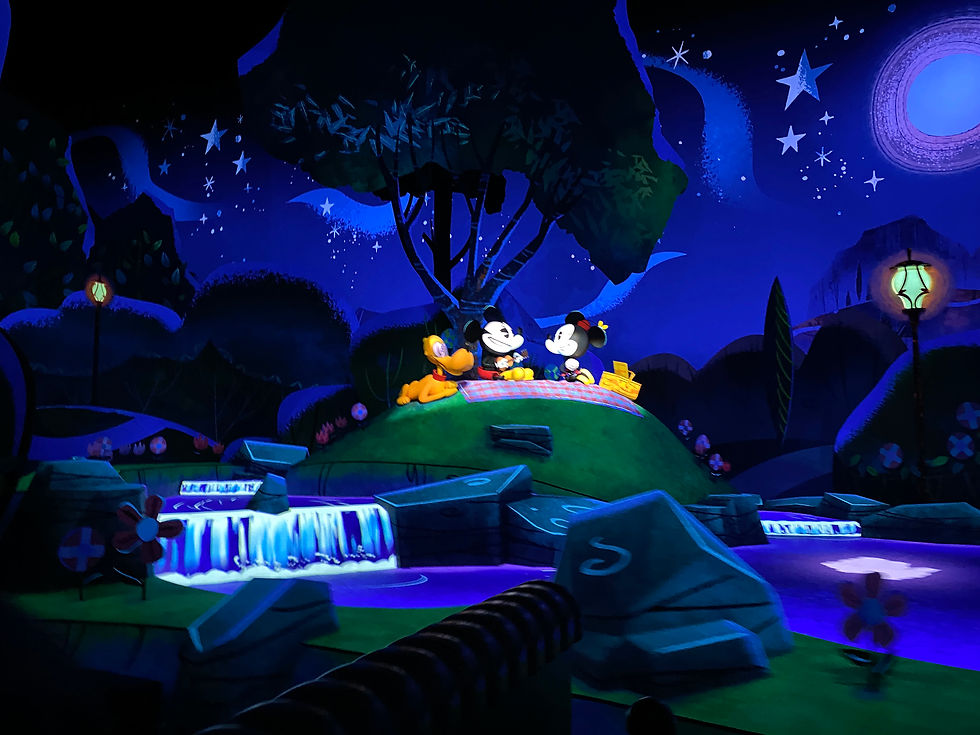Why Art History Makes Disneyland More Magical
- Dr. Lauren Kilroy-Ewbank

- May 16
- 3 min read
Updated: Jun 17

As someone who spends way too much time thinking about art history and Disney, I find it hard not to see Disneyland through a different lens than the average Disneygoer (though, I'd like to help change that!). For me, the park isn’t just a place for rides and parades—it's also a living, breathing museum of sorts. Or rather, it is like the ultimate art history scavenger hunt, filled with visual references and narratives waiting to be discovered. Every time I visit, I find new (and sometimes obscure!) things that are adapted from historical art objects and buildings. It makes searching for Disney details all the more—it is the Magic Nerdom (I know, I know).

"Art history makes Disneyland more magical!"—Me, an art historian
In my opinion, the art historical references add another layer of magic to Disneyland or Epcot Center or [pick the park of your choice!]. Knowing the artistic inspirations behind your favorite attractions enhances your appreciation of the park. How so? Here are a few ways.

It offers deeper stories. You will recognize historical references and hidden meanings in land and attraction designs.
When you understand the art historical references woven into Disneyland's attractions, you gain a better sense of the narratives that Disney Imagineers have crafted over the years. Some are hidden in plain sight; others are very on the nose. For instance, the design of Pirates of the Caribbean has numerous art historical references—too many for any single blog post! But it draws, in part, from 17th-century European art, particularly the dramatic use of light and shadow known as tenebrism, popularized by artists like Caravaggio in Italy. The attraction’s dark, moody atmosphere, rich colors, and detailed props evoke the same intensity and reality effects found in baroque naturalist paintings. It adds drama to our story of cursed skeletonized scallywags. Imagine if the ride were all pinks and baby blues with golden accents! Leave that in Fantasyland, amiright?

It enhances your experiences. You see how attractions and lands connect Disneyland to iconic artworks and cultural eras
Once you know the historical roots of an attraction, it’s easier to see how Disneyland’s Imagineers transform the park into an immersive art gallery or art historical scavenger hunt. Take Haunted Mansion, for example. Disney wants us to feel like we are stepping out of our time and into the southern US in the late 19th century. The eerie design of the mansion and its surroundings draws from Greek Revival architecture and the Victorian fascination with death and the supernatural. The attraction's interior is filled with playful yet ominous references to a lot of 18th- and 19th-century art, with its blue-and-white porcelain, seance room, eerie portraits, macabre designs, and Victorian aesthetic. There is a lot I could say about spirit photography (and will, in a later post!).

It develops an appreciation for detail. Imagineers do not mess around
Anyone who has visited a Disney park can agree: Disneyland’s attention to detail is unparalleled, with every element carefully designed to create an immersive atmosphere that transports you to another world and time period. Take New Orleans Square, for example. The architecture of this area is inspired by New Orleans's French Quarter, with its intricate ironwork, pastel-colored facades, and wrought-iron balconies. This design pays homage to the vibrant, cultural melting pot of New Orleans, and it's steeped in references to 19th-century architectural styles, in particular, that enliven this part of the park. I especially enjoy that it doesn't just borrow elements from French New Orleans, but Spanish New Orleans, an excellent tie-in to Pirates since we head to the Spanish Caribbean. The subtlety and precision in these elements give visitors the impression they are in the city, even if they have never been there before. Is it 100% accurate? No. Was it trying to be? Also no. Is it fun to know what these references are to appreciate the choices Imagineers made? Absolutely!
Art History Makes Disneyland More Magical
So what do you think? Are you convinced that learning more about art history at Disneyland might be worth it?
Want more art history-inspired Disney fun? Stick around—there’s a whole world of fascinating connections waiting to be uncovered. Whether you’re a Disney fan, an art history nerd, or just here for the humor, I’ve got you covered.
CITE THIS PAGE: Kilroy-Ewbank, Dr. Lauren. "Why Art History Makes Disneyland More Magical." lkilroyewbank.com <Insert date you accessed> https://www.lkilroyewbank.com/post/why-art-history-makes-disneyland-more-magical.







Comments